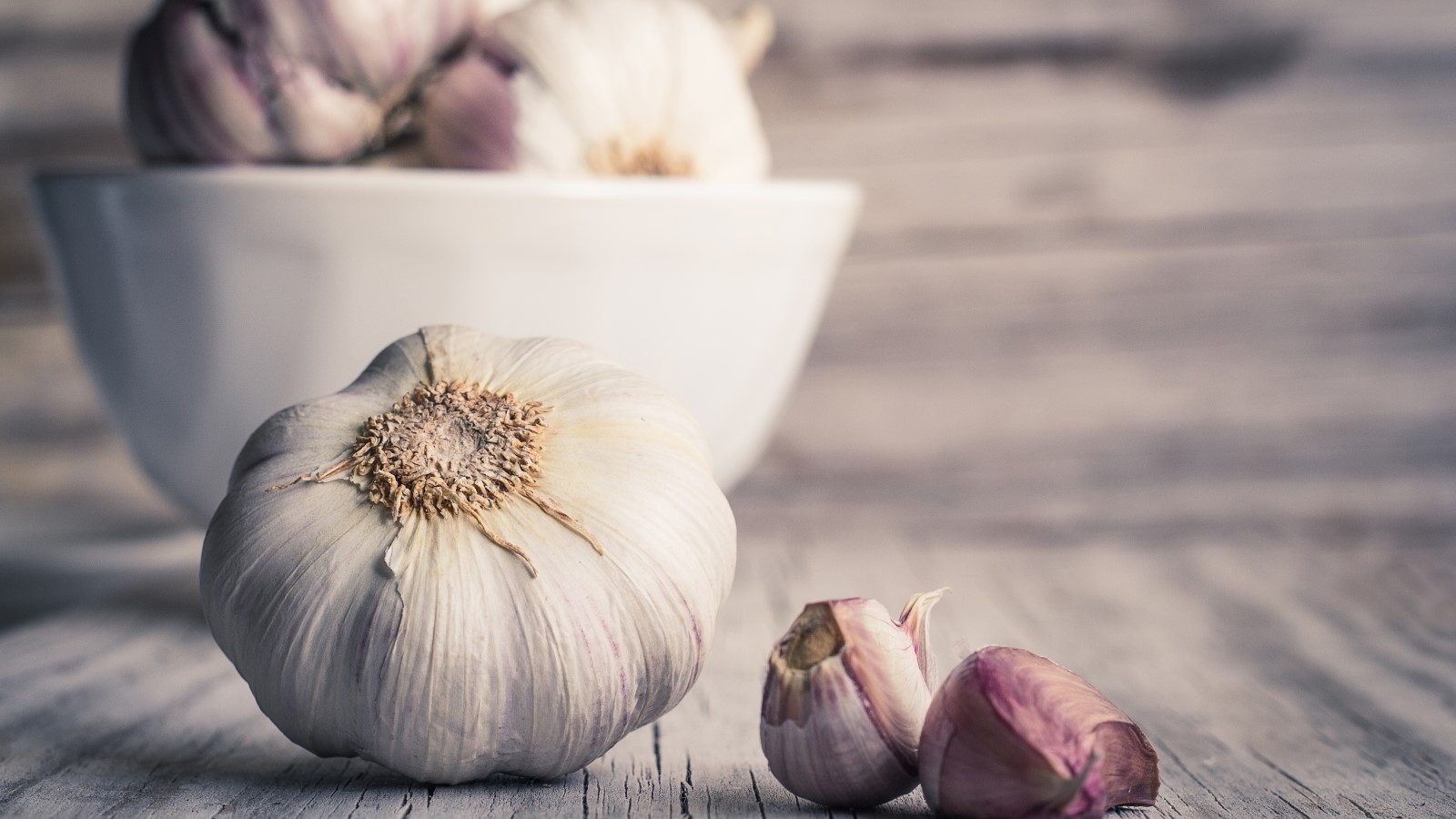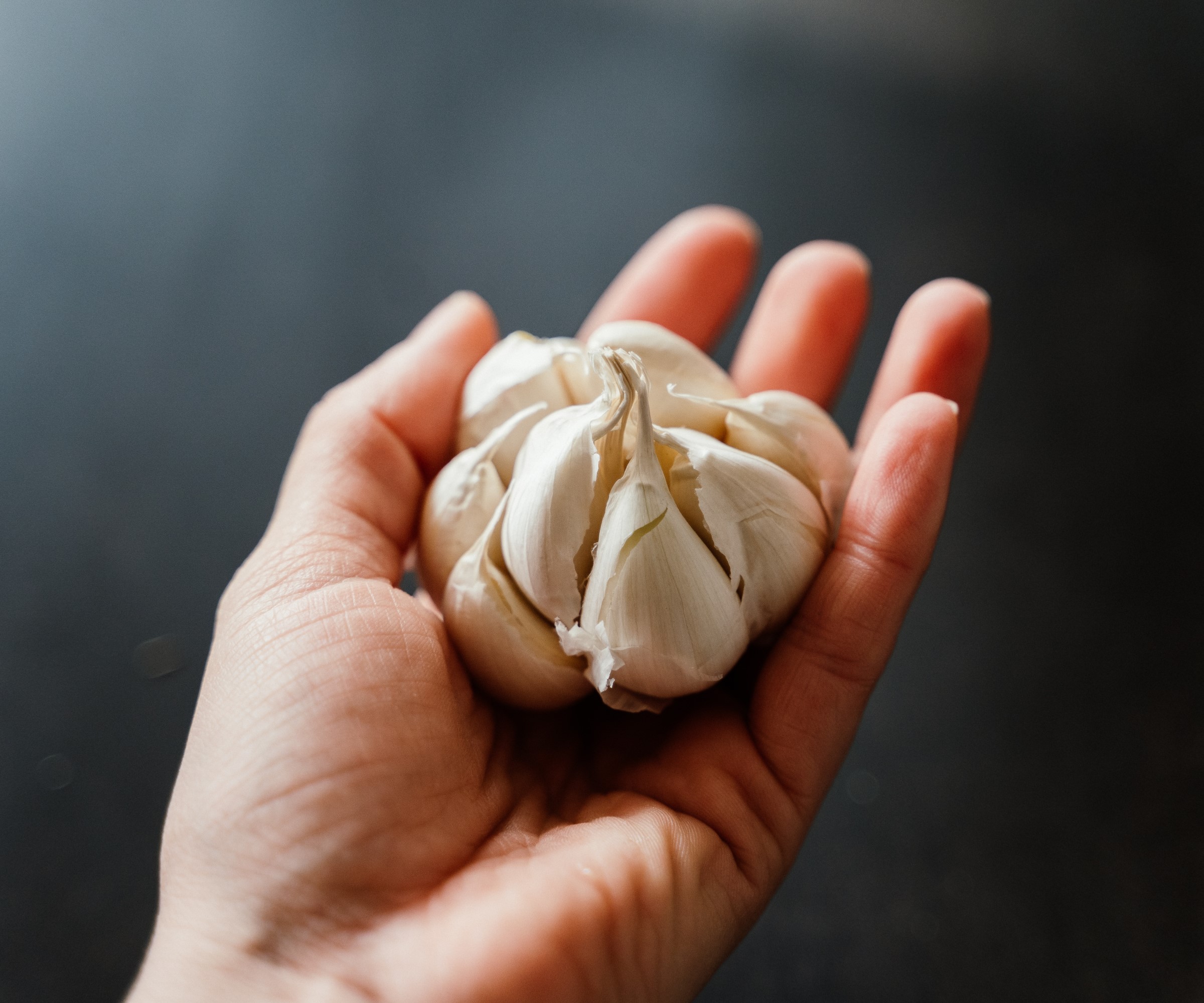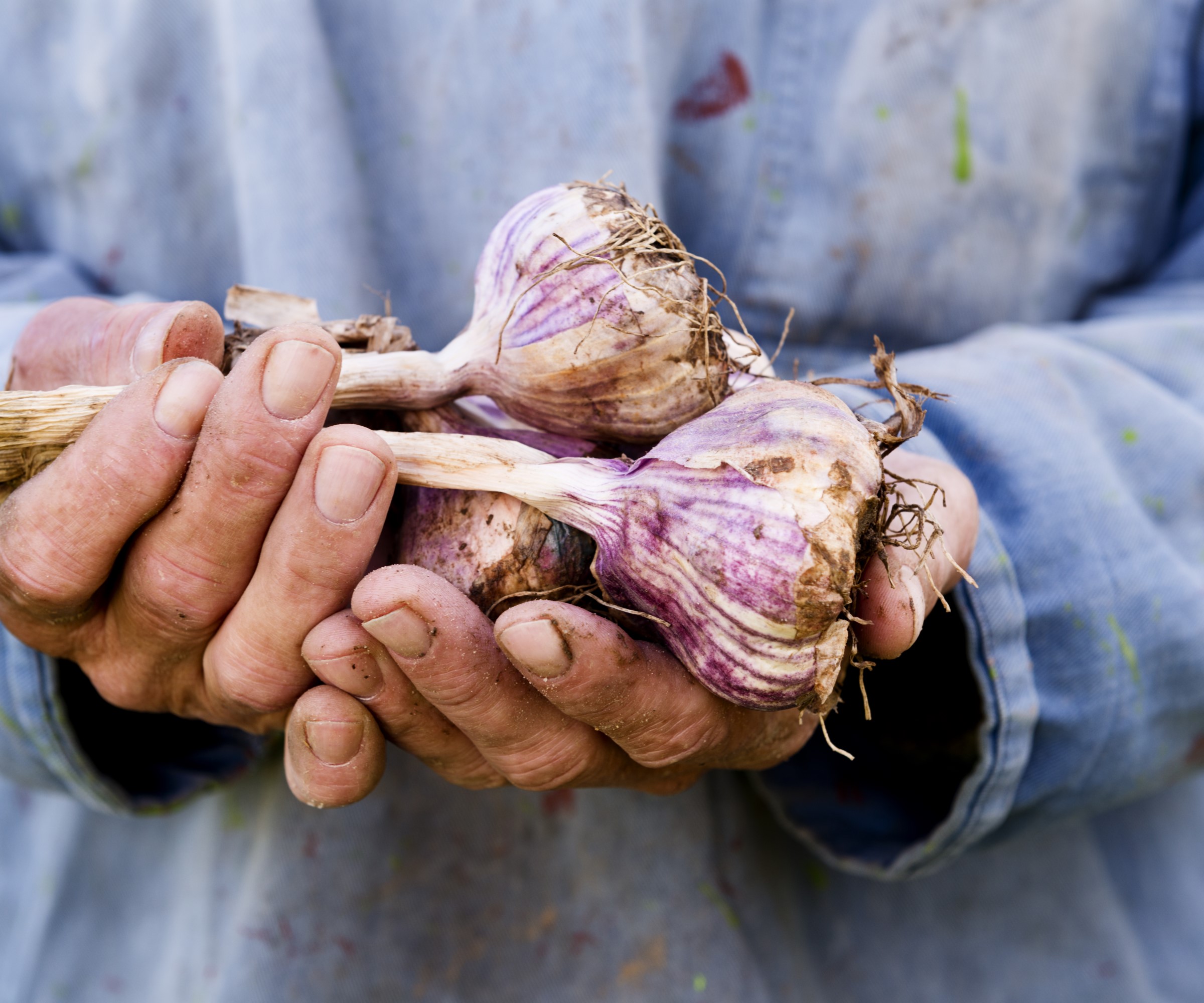Can you grow garlic from grocery store garlic? Here's what you need to know before trying it
There are pros and cons to growing store-bought garlic rather than dedicated seed garlic, so make sure you're aware of the risks


Garlic bulbs from a grocery store can be used to grow garlic and it offers a simple and advantageous way to get a crop. One bulb from a store could theoretically give up to a dozen cloves to plant and grow into new bulbs.
Unfortunately, it is not as simple as saying that every store-bought garlic bulb is guaranteed to give you lots of new homegrown garlic. As well as the advantages of being a budget-friendly and convenient method, it does come with risks in terms of viability and potential viruses.
Growing garlic using any suitable method does require patience, but it is well worth the wait. It is a simple crop to grow, and it can store for many months. With a bit of forward thinking, it can mean homegrown garlic year-round for all your culinary needs.

Select the largest garlic cloves to plant

Drew is a former professional kitchen gardener and has worked in several productive gardens growing vegetables for chefs. Garlic was always a mainstay in the vegetable gardens and he has planted, grown and harvested many varieties over the years.
The key points to consider before planting store-bought garlic cloves
Jana Dziak, a homesteader who runs the blog The Peasant's Daughter, admits that, while it is ‘perfectly reasonable and possible’ to grow garlic from grocery store garlic, using seed garlic is always the best route to take if you want a guaranteed crop.
She says: ‘You get such a wide variety of garlic to choose from. And seed garlic purchased locally is a variety you already know will do well in your area.’
What's more, garlic grown specifically for seed is different from garlic that is grown for culinary purposes. Seed garlic is larger as it is left to grow for longer to get bigger cloves that are better for growing, while smaller bulbs can last longer on a grocery store shelf. You can buy seed garlic from Burpee, Nature Hills and Amazon .
Seed garlic is also certified to be free from diseases, something that table garlic for cooking is not. That means grocery store garlic can present a risk of spreading viruses into the vegetable garden when planted. Some of these viruses, such as white rot, can then remain present in the soil. White rot affects all plants in the allium family and means you will be unable to grow onions, garlic, or leeks in that soil for many years.
The other key issue when trying to grow garlic from grocery store garlic is that many bulbs will have come from overseas and may have been treated with chemicals to prevent sprouting.
Jen McDonald, certified organic garden specialist and co-founder of Garden Girls, warns that you cannot be sure of the exact origin of the bulbs and how long they have been sitting on store shelves. These factors will affect the viability of the bulbs and put in question whether they will ever actually sprout and grow.
‘There is a possibility that the garlic has been imported from another country and preservatives have been used to prolong the life of each bulb,’ she adds.
‘Once harvested and preserved, this garlic has likely undergone several different modes of transport and handling just to get it from farm to store. This process could take weeks or even months.’
It's also worth bearing in mind that most garlic sold in stores for culinary purposes are softneck varieties. Hardneck and softneck garlic are the two different types of garlic and they vary in terms of hardiness, flavor, and storage. Softneck garlic is not suitable for growing in all zones, as it is not as hardy as hardneck.
If you live in USDA zone 6 or below it would not be recommended to grow softneck garlic throughout winter, hardneck would be best. Unless you know the exact type of garlic you are getting from the grocery store, then it could be considered a risky practice to plant it outdoors. You can grow garlic indoors, though softneck garlic is better suited in this situation.

Garlic has a long growing season of up to nine months
What about using organic garlic bulbs from grocery stores?
There is a wide range of organic garlic bulbs available to buy for both culinary and growing purposes. While it can help alleviate any fears about the bulbs being sprayed with nasty chemicals, those organic grocery store garlic bulbs intended for cooking will have not been screened for diseases. If you do favor using store-bought garlic to grow new crops, however, then opting for organic is the safer way to go.
Jen McDonald from Garden Girls recommends that, rather than just choosing bulbs off any store shelves, it might be more worthwhile to take a trip to a local farmers' market. This way you can speak to the grower directly to ask questions, find out all the information required, and put trust in their expertise.
She says: ‘You’ll see their success firsthand and can inquire about growing methods. In addition, you’ll know that the grower has chosen the proper variety of garlic (hard or softneck based on climate), and you can feel confident that this garlic will grow well in your exact zone.’

Garlic grown for culinary uses are smaller than seed garlic
Top tips for planting grocery store garlic successfully
If you want to plant garlic you have got from the grocery store or farmers' market, it can be done in just a few simple steps. Garlic likes an open and sunny spot in which to grow and dig in lots of garden compost or well-rotted manure before planting.
You can grow garlic in pots successfully and that presents an opportunity to grow garlic bulbs away from other crops and then discard the soil afterwards, as a precaution against potential diseases. If you are short of space outdoors, you can grow garlic inside your home on a windowsill.
- Separate the garlic bulb, keeping the papery husk on each clove.
- Only plant the larger cloves – you can save the smaller ones for cooking with.
- Plant cloves approximately 2 inches deep and 4-6 inches apart with the cloves pointed end facing up.
- Keep the area moist but not waterlogged
- If you are growing hardneck varieties of garlic, you can cut off the scapes once they sprout.
- Be patient as garlic takes up the nine months to grow. You should harvest garlic when the leaves turn yellow.
Sign up to the Homes & Gardens newsletter
Design expertise in your inbox – from inspiring decorating ideas and beautiful celebrity homes to practical gardening advice and shopping round-ups.

Drew’s passion for gardening started with growing vegetables and salad in raised beds in a small urban terrace garden. He has worked as a professional gardener in historic gardens and specialises in growing vegetables, fruit, herbs, and cut flowers as a kitchen gardener. That passion for growing extends to being an allotmenteer, garden blogger, and producing how-to gardening guides for websites. Drew was shortlisted for the New Talent of the Year award at the 2023 Garden Media Guild Awards.
-
 How to clean a patio – 6 different methods, and when you must use a chemical cleaning agent
How to clean a patio – 6 different methods, and when you must use a chemical cleaning agentFrom manual scrubbing, natural solutions or calling in the pros, industry experts reveal the benefits and considerations of each method
By Andy van Terheyden Published
-
 Kris Jenner's favorite air fryer, the Ninja Crispi, is the perfect small kitchen solution – it deserves a place on the most compact of countertops
Kris Jenner's favorite air fryer, the Ninja Crispi, is the perfect small kitchen solution – it deserves a place on the most compact of countertopsKris approves of this compact yet powerful air fryer, and so do our own kitchen appliance experts, praising it for its multifunctionality
By Hannah Ziegler Published